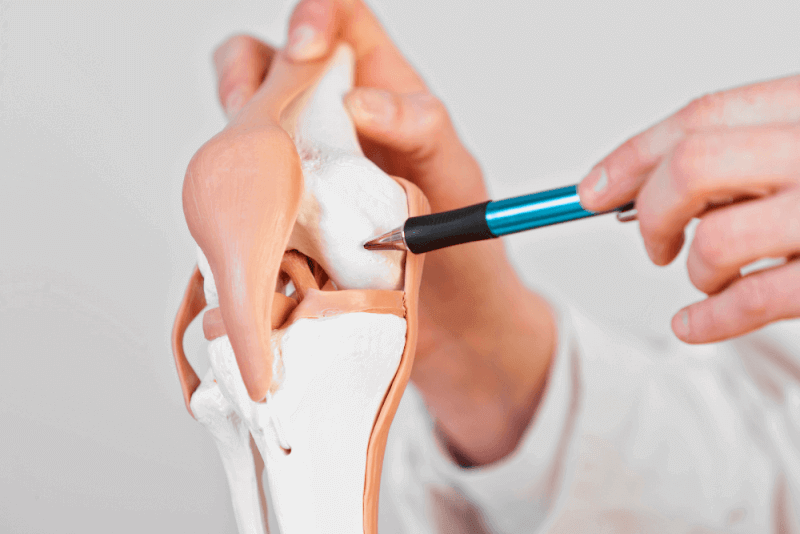30-Second Summary
- Chondrosarcoma is a rare type of cancer that originates in the cartilage between bones and may develop from benign bone tumors.
- The exact cause of chondrosarcoma is still unknown. It is often associated with a hereditary condition called Li-Fraumeni syndrome.
- Although it can occur at any age, it is most commonly seen in middle-aged and older individuals.
- Surgery is the main treatment for chondrosarcoma. In some cases, additional treatments may be recommended depending on the tumor's location and growth rate.
What is Chondrosarcoma?
Chondrosarcoma is a rare type of cancer that begins in the cartilage tissue located between bones. It may also develop from benign bone tumors. It most commonly affects bones such as the pelvis, sternum, ribs, arms, and legs.
Chondrosarcoma generally grows slowly and may not cause symptoms in its early stages. However, some rare types of chondrosarcoma can grow rapidly and metastasize to other parts of the body.
Chondrosarcoma Causes
The exact cause of chondrosarcoma is not yet fully understood. However, it is often associated with a hereditary condition known as Li-Fraumeni syndrome. People with certain medical conditions have a higher risk of developing chondrosarcoma. These conditions include the following:
Maffucci Syndrome
People with this syndrome have multiple benign bone tumors, which can weaken the bones. Unusually large clusters of blood vessels and reddish or purplish skin growths called hemangiomas may also be present.
Ollier Disease
Similar to Maffucci syndrome, individuals with this condition have multiple benign tumors in their bones.
Multiple Hereditary Exostoses (Osteochondromatosis)
These are benign bone tumors that can interfere with normal bone growth.
Chondrosarcoma Risk Factors
Several factors may increase the risk of developing chondrosarcoma. These include:
- Although it can occur at any age, it is most commonly seen in middle-aged and older adults.
- Having other bone-related conditions
Chondrosarcoma Symptoms
Since chondrosarcoma tends to grow slowly, it may not cause symptoms in its early stages. However, when symptoms do appear, they may include:
- Increasing pain
- A growing lump or swelling
- Weakness, loss of bladder or bowel control if the tumor presses on the spinal cord
- Fatigue
- Unintentional weight loss
Chondrosarcoma Diagnosis Criteria
The diagnostic process for chondrosarcoma involves a series of tests and procedures, including the following:
Physical Examination
During the physical exam, the doctor will ask detailed questions about symptoms and gather clues for diagnosis by examining various parts of the body using different techniques.
Imaging Tests
Imaging methods used in the diagnosis include X-ray, bone scan, MRI, and CT scan.
Biopsy
A procedure performed to collect tissue samples from the suspicious area. These samples are examined in a laboratory. The biopsy method depends on the location of the suspected tissue. Biopsy procedures are planned to collect samples without the need for major surgical intervention.
Chondrosarcoma Treatment Methods
The main treatment for chondrosarcoma is surgery. In some cases, additional treatments may also be recommended. The most appropriate treatment is determined based on the location and growth rate of the cancer.
Radiation Therapy for Chondrosarcoma
High-energy beams from sources like X-rays or protons are used to kill cancer cells. During radiation therapy, a machine moves around the patient, directing radiation to a specific point on the body.
It is used when surgery cannot remove the cancer or if surgery does not remove all cancerous tissue. Radiation therapy may also be used to control cancer that has spread to other parts of the body.
Chemotherapy for Chondrosarcoma
A treatment that uses drugs to kill cancer cells. Chemotherapy is not commonly used for chondrosarcoma because it generally does not respond well to it. However, some rapidly growing subtypes of chondrosarcoma may respond to chemotherapy.
Chondrosarcoma Surgery
The aim of chondrosarcoma surgery is to remove the cancerous tissue along with a margin of healthy tissue. The surgical method varies depending on the type of chondrosarcoma.
Surgical Methods for Chondrosarcoma
The surgical procedures used in chondrosarcoma include the following:
Scraping Cancer from Bone
For small or slow-growing chondrosarcomas in the arms or legs, surgeons may scrape cancer cells from the bone. To kill remaining cells, cold gas or chemicals may be used. The bone may be repaired using a graft or cement.
Removing Healthy Tissue Around the Tumor
In most cases, more extensive bone removal is needed to fully eliminate the cancer. If chondrosarcoma occurs in a limb, amputation might be necessary. When possible, surgeons aim to preserve the limb, removing the affected bone and replacing it with a graft or prosthesis — a procedure known as limb-sparing surgery.
Benefits of Chondrosarcoma Surgery
Surgery is the primary treatment for chondrosarcoma. Complete removal of the tumor increases the chance and speed of recovery.
Things Chondrosarcoma Patients Should Pay Attention To
Receiving a chondrosarcoma diagnosis is a life-changing experience. Each patient must find their own way to cope with the physical and emotional changes that come with cancer. Taking the first step after diagnosis can be challenging, but the following tips can help patients manage this process:
Learn More About the Treatment
Staying in close contact with the healthcare team and getting clear answers to all questions can help patients better understand their treatment options. Gaining more information about the disease and its treatments allows patients to make decisions with more confidence.
Family and Friends
Maintaining strong relationships is one of the most powerful tools in coping with cancer. Friends and family can provide essential physical and emotional support throughout the process.
Having Someone to Talk To
It is important for patients to have someone they can talk to about their hopes and fears. This could be a family member, a friend, a psychologist, a spiritual advisor, or even fellow cancer patients.
Chondrosarcoma Stages
Unlike many other types of cancer, chondrosarcoma is classified into three stages. The lower the grade, the less likely it is to grow and spread.
Stage 1 Chondrosarcoma
Low-grade chondrosarcoma is also known as atypical cartilaginous tumor. It is the slowest growing and least likely to spread among the stages.
Stage 2 Chondrosarcoma
This stage has a higher potential for growth and spread compared to Stage 1, but the risk is still considered moderate.
Stage 3 Chondrosarcoma
Stage 3 represents the most aggressive form of chondrosarcoma. It has the highest likelihood of spreading and is considered the final stage of the disease.
Types of Chondrosarcoma
Chondrosarcoma is classified into several subtypes. These include:
Dedifferentiated Chondrosarcoma
This type begins as a typical chondrosarcoma and later transforms into cells similar to those found in high-grade sarcomas. It typically occurs in older adults and grows more aggressively than other types.
Mesenchymal Chondrosarcoma
This type is more common in younger adults and tends to grow rapidly. It also has a higher rate of recurrence after treatment compared to other subtypes.
Clear Cell Chondrosarcoma
Clear cell chondrosarcoma typically affects men between the ages of 30 and 50. It usually occurs near a joint, grows slowly, and rarely spreads to other parts of the body.
Recovery Process in Chondrosarcoma
The recovery process from chondrosarcoma depends on the type of treatment administered. If a limb amputation surgery was performed, patients may need to attend rehabilitation sessions to comfortably adapt to prosthetic limbs. Additionally, after surgery, it is generally recommended that patients work with physical therapy specialists.
Risks of Chondrosarcoma
Chondrosarcoma is an invasive tumor with a risk of spreading. Therefore, if metastasis occurs, it can affect the function of the organ to which it has spread. In addition, complications that may arise due to chondrosarcoma include:
- It can damage the bones.
- It may cause disruption in bone integrity.
- It may lead to fractures or cracks in the bones.
- It can affect mobility.
- If the spinal cord is involved, the nervous system may be severely affected.







